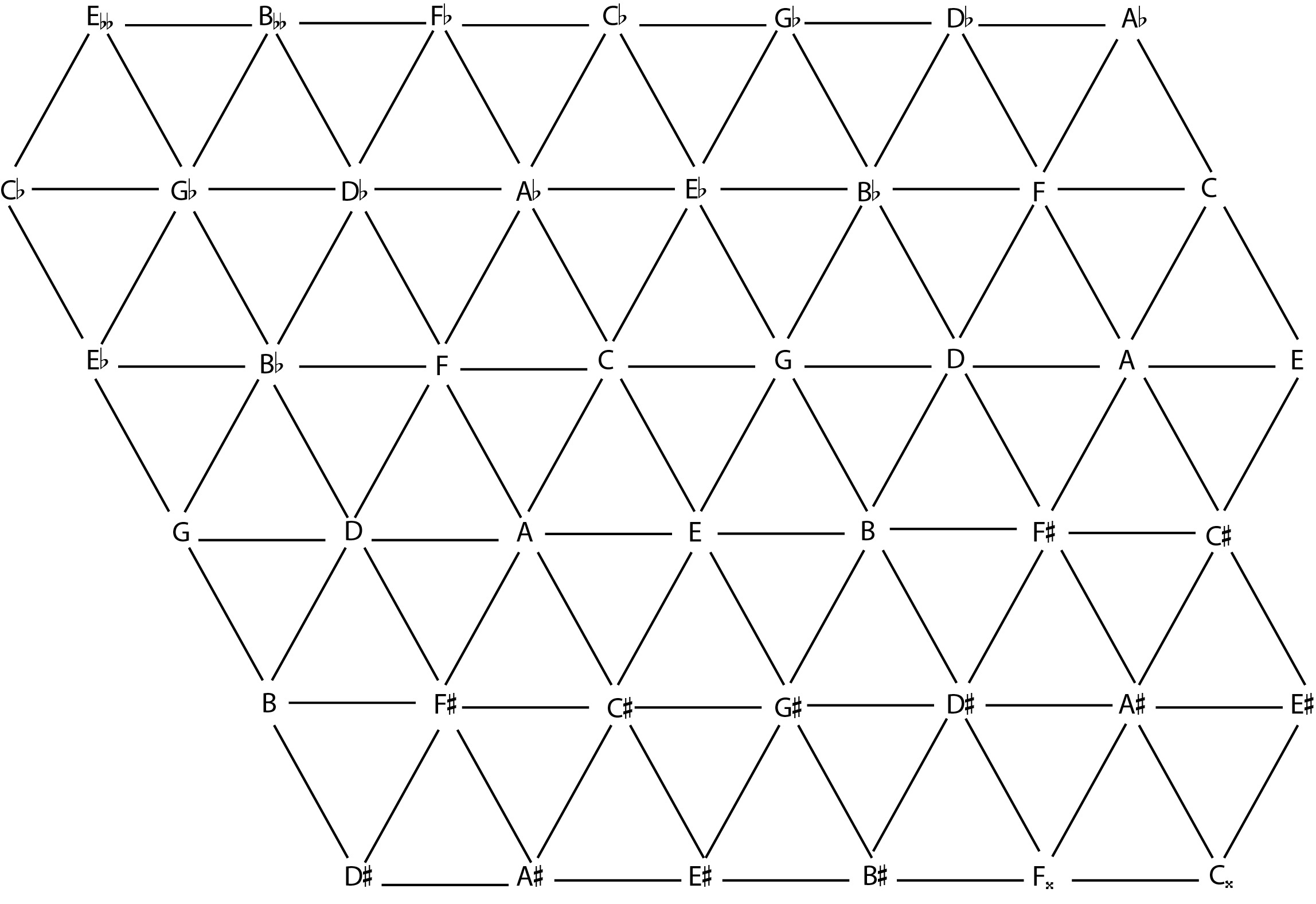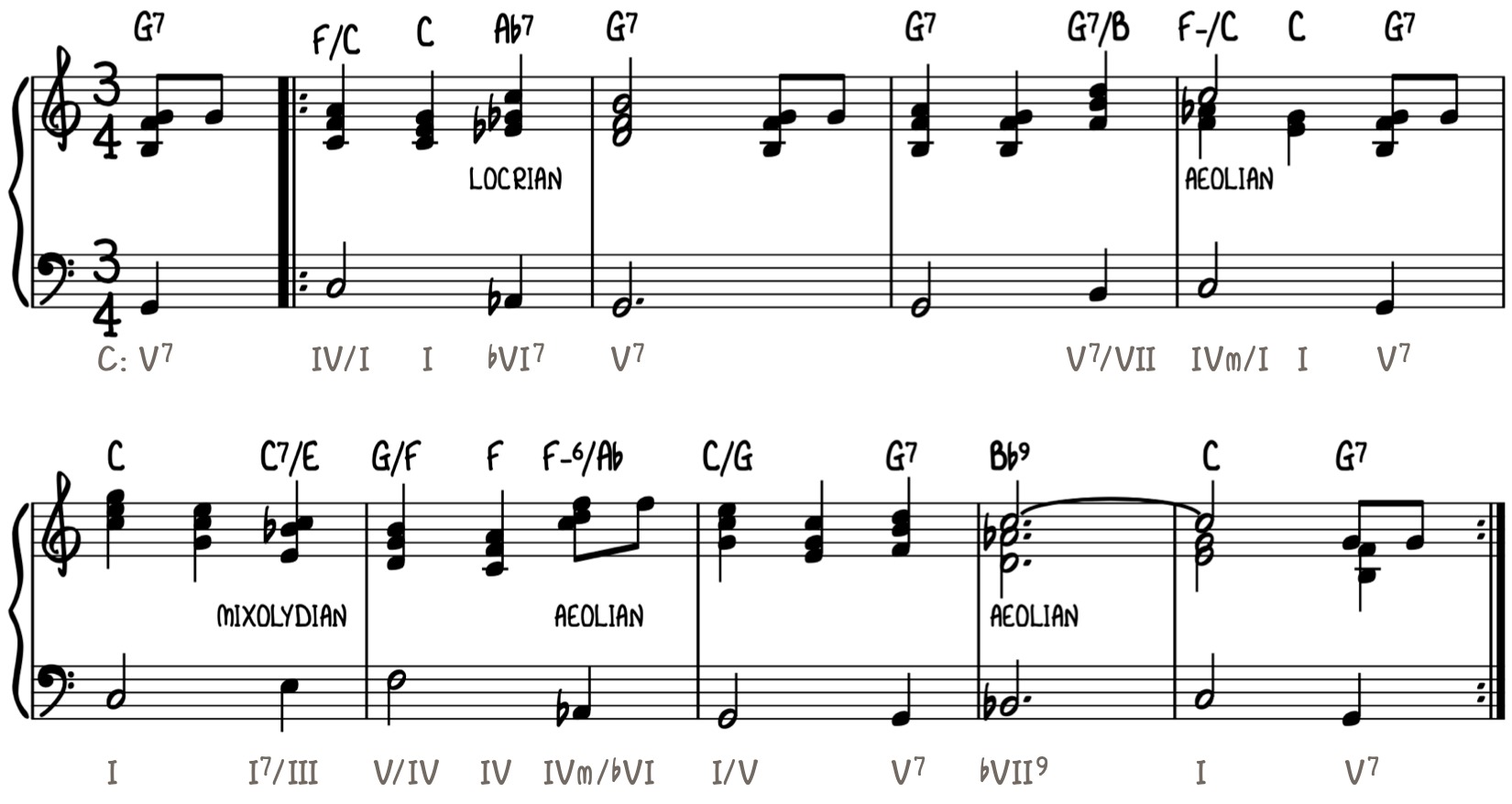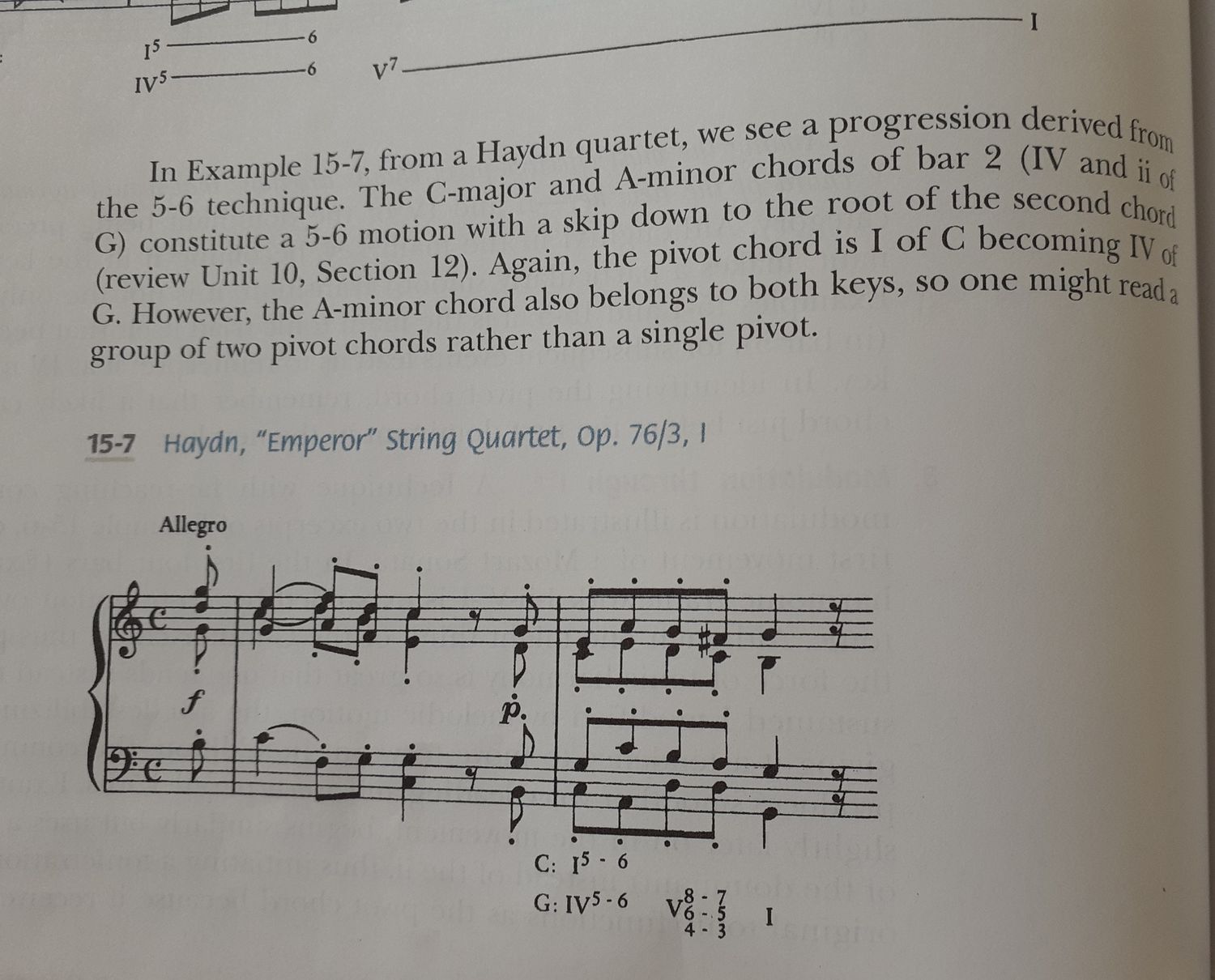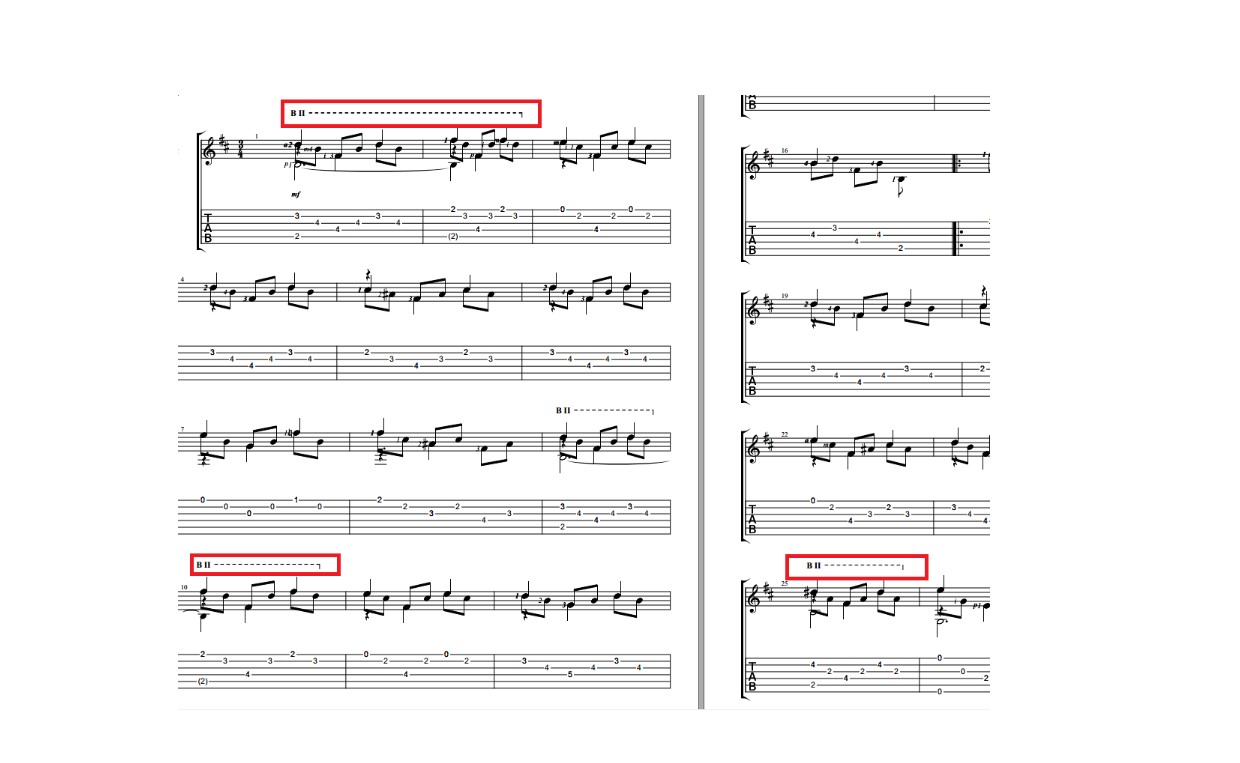Home>Production & Technology>Music Theory>What Traditions Does Western Music Theory Have


Music Theory
What Traditions Does Western Music Theory Have
Published: February 1, 2024
Discover the rich traditions of Western music theory and how it has shaped the study and understanding of music. Explore the foundations, concepts, and principles behind this influential discipline.
(Many of the links in this article redirect to a specific reviewed product. Your purchase of these products through affiliate links helps to generate commission for AudioLover.com, at no extra cost. Learn more)
Table of Contents
- Introduction
- Theoretical Foundations of Western Music
- Notation Systems in Western Music Theory
- Basic Elements of Western Music Theory
- Diatonic Scales and Tonality
- Harmony in Western Music Theory
- Chords and Chord Progressions
- Form and Structure in Western Music
- Counterpoint and Polyphony in Western Music
- Western Music Theory and Performance
- Conclusion
Introduction
Music theory is a fascinating discipline that seeks to understand how music works, providing a framework for analyzing and creating melodies, harmonies, and rhythms. In the world of Western music, which encompasses genres such as classical, jazz, rock, and pop, there are specific traditions and concepts that form the basis of music theory.
Understanding Western music theory goes beyond simply being able to read sheet music or play an instrument proficiently. It allows musicians to delve deeper into the intricacies of composition, improvisation, and interpretation. Whether you’re a music student, a music lover, or a seasoned musician, a solid understanding of Western music theory can enhance your appreciation and enjoyment of music.
This article aims to explore the foundations of Western music theory, including its theoretical principles, notation systems, and key elements. We will delve into concepts such as diatonic scales, tonality, harmony, chord progressions, form and structure, and the art of counterpoint. By the end of this article, you will gain a comprehensive understanding of the traditions that shape Western music theory and how they contribute to the creation of beautiful and expressive compositions.
It’s important to note that while Western music theory has a rich historical tradition, it is not the only system of music theory in the world. Various cultures across the globe have their own unique theories and practices, each offering valuable insights into the art of music composition and performance. However, in this article, our focus will be on the traditions and concepts specific to Western music theory.
So, let’s embark on this musical journey and unravel the beauty and intricacies of Western music theory!
Theoretical Foundations of Western Music
Western music theory is built upon a foundation of fundamental concepts and principles that have been developed and refined over centuries. These theoretical foundations serve as the backbone for understanding and analyzing music in the Western tradition.
One of the key theories in Western music is the concept of tonality. Tonality refers to the organization of music around a central pitch or tonal center, known as the key. It provides a sense of stability and coherence to a composition, as well as defining the relationships between different pitches and chords.
Another foundational concept is the diatonic scale. The diatonic scale is a specific arrangement of seven pitches within an octave, consisting of whole steps and half steps. It serves as the basis for many melodies and harmonies in Western music.
Furthermore, Western music theory relies heavily on the system of notation. Notation allows composers and musicians to communicate their ideas and interpretations of music through written symbols. The most commonly used notation system in Western music is the staff, which consists of five horizontal lines and various symbols placed on or between the lines to represent specific pitches and durations of notes.
The concept of harmony is also essential in Western music theory. Harmony refers to the combination of different pitches played simultaneously or in succession. It involves the study of chords, chord progressions, and the relationships between different harmonies. Understanding harmony is crucial for composing and analyzing Western music.
Counterpoint is another critical aspect of Western music theory. Counterpoint refers to the art of combining multiple independent melodic lines to create harmonically and melodically satisfying music. It involves intricate rules and techniques to ensure smooth and coherent musical lines.
These theoretical foundations provide a framework for understanding the intricate complexities of Western music. They are the tools that musicians and composers utilize to create and interpret the music we hear today. By grasping these concepts, we can gain a deeper appreciation for the artistry and thought behind every musical composition.
Notation Systems in Western Music Theory
In Western music theory, notation systems play a crucial role in representing musical ideas and facilitating communication between composers, musicians, and music enthusiasts. Notation allows for precise documentation of pitch, rhythm, dynamics, and other musical elements. Throughout history, various notation systems have been developed to capture the intricacies of Western music.
One of the most widely used notation systems in Western music is the staff notation. The staff consists of five horizontal lines and four spaces that represent different pitches. Various symbols and markings, such as notes, rests, clefs, key signatures, time signatures, and dynamics, are written on or between the lines to indicate specific musical information. The staff notation provides a visual representation of the pitch and duration of notes, enabling performers to accurately interpret and reproduce the music.
Another important aspect of Western music notation is the use of clefs. Clefs are symbols placed at the beginning of the staff to determine the pitch range of notes represented by the lines and spaces. The most commonly used clefs are the treble clef (G clef), which represents higher pitches, and the bass clef (F clef), which represents lower pitches. Other clefs, such as tenor and alto clefs, are used in specific contexts to indicate different pitch ranges.
In addition to the staff notation, Western music also utilizes symbolic notation systems to represent various musical elements. For example, dynamics are indicated using symbols such as “p” for soft (piano) and “f” for loud (forte), while articulation and phrasing are represented by symbols like staccato, legato, and accents. These symbols provide performers with instructions on how to shape and interpret the music.
With the advancement of technology, digital and computer-based notation systems have also emerged. Software programs like Finale and Sibelius allow composers and musicians to create and edit musical scores digitally. These programs offer features such as playback capabilities, which enable composers to listen to their compositions before they are performed.
Notation systems in Western music theory are essential tools for preserving, sharing, and analyzing musical compositions. They provide a standardized and universal language that transcends time and allows musicians from different eras and backgrounds to interpret and perform music accurately. Whether handwritten or digitally crafted, notation systems serve as the bridge between composers and performers, enabling the transmission and appreciation of Western music across generations.
Basic Elements of Western Music Theory
Western music theory encompasses a set of foundational elements that are essential for understanding and analyzing musical compositions. These elements provide the building blocks for creating melodies, harmonies, rhythms, and structures that define the beauty and complexity of Western music.
One of the fundamental elements is melody. Melody refers to a sequence of pitches arranged in a logical and memorable manner. It is the main line of a piece of music that carries the tune and captures the listener’s attention. Melodies are often constructed using scales and intervals, which are specific patterns of ascending and descending pitches.
Rhythm is another crucial element in Western music theory. It pertains to the organization of time in music and involves the duration and accentuation of notes and rests. Rhythmic patterns and subdivisions give music its characteristic flow and groove. Different rhythmic patterns can create a sense of tension, release, and movement within a composition.
Harmony is a vital element that deals with the vertical aspect of music. It refers to the combination and progression of multiple notes played simultaneously or in succession. Chords, which are formed by stacking specific intervals, play a central role in harmony. Understanding harmonic structures allows musicians to create rich and expressive sonorities that complement the melody and create a sense of tonal center.
Form is another key element in Western music theory. Form refers to the organization and structure of a music piece. It involves how individual sections or phrases are arranged and how they relate to one another. Common musical forms include binary, ternary, theme and variations, and sonata form. Form gives coherence and shape to a composition and allows listeners to follow and appreciate its progression.
Dynamics and articulation are elements that deal with the expression and interpretation of music. Dynamics refer to the volume or intensity of the music, ranging from soft (piano) to loud (forte) and everything in between. Articulation refers to how notes are played, including legato (smooth and connected) or staccato (short and detached). These elements allow performers to bring out the desired emotive qualities of a composition.
Lastly, timbre or tone color is an element that refers to the unique quality of different instruments or voices. Timbre allows us to distinguish between a piano and a trumpet playing the same notes, as each instrument has its distinct sound characteristics. Understanding timbral qualities can contribute to the artistic choices made by composers and performers.
By comprehending these basic elements of Western music theory, musicians and music enthusiasts can dissect, interpret, and appreciate the intricate components that make up a composition. Whether it’s a well-crafted melody, a compelling harmony, or a captivating rhythm, these elements combine to create the captivating and emotive experience that Western music offers.
Diatonic Scales and Tonality
Diatonic scales and tonality are fundamental concepts in Western music theory that form the basis for creating melodies, harmonies, and establishing a sense of musical key.
A diatonic scale is a specific arrangement of pitches within an octave, consisting of a pattern of whole steps and half steps. The most commonly used diatonic scale in Western music is the major scale, which follows the pattern of whole step, whole step, half step, whole step, whole step, whole step, and half step.
The major scale serves as a reference point for defining tonality in Western music. Tonality refers to the organization of music around a central pitch, called the tonic, and its corresponding major or minor scale. Tonality provides a sense of stability and cohesion in a composition, allowing listeners to perceive a hierarchy of pitches and harmonies.
Within tonality, a key is established by selecting a specific tonic pitch and its corresponding major or minor scale. For example, if the tonic is C and the major scale is used, the composition is said to be in the key of C major. The choice of key influences the overall mood and character of a piece of music.
Harmonies within tonality are built upon the diatonic scale. Chords are constructed by selecting specific pitches from the scale and stacking them in intervals, typically in thirds. The most common chords derived from the major scale are the tonic (I), subdominant (IV), and dominant (V) chords.
In addition to the major scale, there are also other diatonic scales, such as the natural minor scale, harmonic minor scale, and melodic minor scale. These scales are characterized by different patterns of whole steps and half steps and provide a range of tonalities and expressive possibilities.
Tonality and diatonic scales play a significant role in Western harmony and composition. They provide a framework within which musicians can create melodies and harmonies that have a coherent and pleasing sound. The use of diatonic scales and the establishment of tonality allow composers and performers to evoke certain emotions, convey a particular mood, and guide the listener through a musical journey.
Understanding diatonic scales and tonality in Western music theory is essential for musicians looking to compose, analyze, and appreciate the rich and diverse world of Western music. It opens the door to a deeper understanding of melody, harmony, and the expressive possibilities offered by the intricate interplay of the diatonic scales within different tonalities.
Harmony in Western Music Theory
Harmony is a fundamental aspect of Western music theory that deals with the combination and progression of multiple pitches played simultaneously or in succession. It plays a crucial role in creating the rich and expressive soundscapes that define Western music.
In Western music theory, harmony is built upon the concept of chords. A chord is a group of three or more pitches played together to create a harmonious sound. Chords are constructed by selecting specific pitches from a diatonic scale and stacking them in intervals, typically in thirds. The most basic type of chord is the triad, which consists of three pitches: the root, the third, and the fifth.
Chords are categorized based on their relationship to the tonic pitch of the key. The tonic chord, also known as the I chord, is considered the most stable and central harmony in a key. The dominant chord, labeled as the V chord, provides a sense of tension that leads to resolution back to the tonic. The subdominant chord, known as the IV chord, adds a level of stability and supports the overall structure of the music.
Harmony in Western music theory extends beyond just triads. It also encompasses more complex harmonies, such as seventh chords, extended chords, and altered chords. These chords add color and complexity to a composition, creating a greater range of tonal possibilities.
Chord progressions are an essential component of harmony in Western music theory. A chord progression is a sequence of chords that forms the underlying structure of a piece of music. Common chord progressions, such as the I-IV-V or the ii-V-I progressions, have been used extensively in a wide range of musical genres.
Modulation is another aspect of harmony that involves changing the tonic pitch or key within a composition. Modulation adds variety and interest to the music by exploring different tonalities and creating new harmonic relationships.
Understanding harmony is crucial for composers, arrangers, and performers. It allows them to create and interpret music with a deep understanding of the relationships between pitches and chords. By studying harmony, musicians can develop a sense of how chords progress, how different harmonies interact, and how to create tension and release within their compositions.
Harmony is a powerful tool that adds depth and emotion to Western music. By harnessing the principles of harmony, musicians can create captivating and harmonically-rich compositions that have a lasting impact on the listener.
Chords and Chord Progressions
In Western music theory, chords and chord progressions are fundamental components that shape the harmony and structure of a piece of music. Chords are groups of three or more pitches played together, while chord progressions are sequences of chords that create a sense of movement and musical tension.
Chords are the building blocks of harmony in Western music. They provide the foundation for creating rich and expressive harmonies that support melodies and shape the overall sound of a composition. The basic type of chord is the triad, which consists of three pitches: the root, the third, and the fifth. Triads can be major, minor, augmented, or diminished, depending on the relationship between the root and the third.
Chords are typically represented by chord symbols, such as C, Fm, or G7. These symbols indicate the root note and the quality of the chord. For example, C represents a C major chord, while Fm represents an F minor chord, and G7 represents a G dominant seventh chord.
Chord progressions involve the sequential movement from one chord to another. They create a sense of tension, release, and musical development within a piece. Common chord progressions include the I-IV-V progression, which is widely used in various genres, and the ii-V-I progression, which is prevalent in jazz and other styles of music.
Chord progressions can also be categorized into cadences, which are specific chord patterns that signify the end of a musical phrase or section. The most common cadences are the authentic cadence (V-I), plagal cadence (IV-I), and half cadence (ending on the V or dominant chord).
Understanding chord progressions allows musicians to create harmonically pleasing compositions, improvise melodies, and analyze the structure of existing pieces. By studying different chord progressions, musicians can learn how chords and their relationships contribute to the overall mood and emotion of a piece of music.
Chord progressions are often used in combination with other elements, such as melody and rhythm, to create a cohesive musical experience. They provide a roadmap for improvisation, allowing musicians to navigate through different chords and explore melodic possibilities.
Whether it’s a simple three-chord progression or a complex sequence of chords, understanding chords and chord progressions opens up a world of musical possibilities. By harnessing the power of chords, musicians can create captivating harmonies and engage listeners with their compositions.
Form and Structure in Western Music
Form and structure play a significant role in Western music, providing a framework for organizing and shaping musical compositions. They guide the arrangement and interaction of musical elements to create cohesive and meaningful musical experiences.
Form refers to the overall organization and layout of a piece of music. It determines how the different sections and musical ideas are arranged, repeated, and developed. Common forms in Western music include binary form (A-B), ternary form (A-B-A), rondo form (A-B-A-C-A), and sonata form (exposition-development-recapitulation).
Structural elements such as phrases, sections, and motifs contribute to the overall form of a composition. A phrase is a musical idea or a small melodic unit that has a sense of completeness. Phrases can be repeated, varied, or developed to create musical interest. Sections are larger, self-contained portions of a composition, often characterized by different melodies, harmonies, or textures.
Motifs are short musical ideas or themes that are recurring throughout a composition. Motifs can serve as building blocks for larger melodic or rhythmic developments, providing a sense of cohesion and unity within a piece.
Form and structure in Western music are not rigid templates but rather flexible frameworks that give composers and performers creative freedom. They provide a sense of balance, contrast, and progression, helping to create engaging and satisfying musical experiences for the listener.
Structure can also be found within individual sections of a composition, such as the verse-chorus structure commonly used in popular music. Within this structure, verses and choruses alternate, providing a clear distinction between different sections of the song.
Understanding form and structure in Western music allows musicians to analyze, interpret, and appreciate the compositions they encounter. It enables performers to navigate through the music, highlighting significant moments and understanding the relationships between different sections and themes.
Additionally, form and structure aid composers in constructing their musical ideas, helping them shape the narrative and emotional arc of a piece. By utilizing different forms and structural techniques, composers can create dynamic and memorable compositions that capture the listener’s attention and imagination.
Form and structure are the guiding principles that provide coherence and shape to Western music. They serve as the invisible blueprint that underpins the beauty and complexity of musical compositions across various genres and eras.
Counterpoint and Polyphony in Western Music
Counterpoint and polyphony are essential components of Western music that involve the interplay of multiple independent melodic lines. They bring complexity and richness to compositions, highlighting the art of combining voices in harmony.
Counterpoint refers to the simultaneous combination of multiple melodic lines that are independent in rhythm and contour, yet harmonically coherent. It is the art of creating a harmonically pleasing texture by interweaving melodic lines that complement and enhance each other.
Polyphony, on the other hand, refers to the texture of music that features two or more independent melodic lines or voices. Each voice in polyphony has its melodic character and can be of equal importance. The interaction between these voices creates harmonically intriguing and intricate musical experiences.
In Western music theory, counterpoint is commonly governed by a set of rules and principles that guide the proper combination of melodic lines. Focusing on melodic intervals, voice leading, and rhythmic relationships, these rules help create musical lines that are both pleasing to the ear and intellectually stimulating.
One of the most notable examples of counterpoint in Western music is the fugue. A fugue is a contrapuntal composition that features the interplay of different melodic voices. It typically consists of an exposition, where the main theme or subject is introduced in one voice and subsequently imitated by other voices. The fugue explores and develops the subject through various episodes and entries, showcasing the complexity and artistry of counterpoint.
Polyphony, as seen in genres like Renaissance choral music and Baroque compositions, presents a more intricate and elaborate approach to counterpoint. Composers such as Johann Sebastian Bach and Palestrina mastered the art of polyphony, creating intricate musical tapestries where multiple voices intertwine harmonically and rhythmically.
Counterpoint and polyphony challenge composers and performers to think dynamically and creatively. They require a deep understanding of harmony, melodic development, and the interplay between voices. Both practices demand careful attention to detail and an acute sense of balance to achieve harmonic coherence and musical integrity.
By studying and appreciating counterpoint and polyphony, musicians can gain a deeper understanding of the intricacies involved in Western music composition. It allows for the exploration of complex melodic relationships, harmonic tensions and resolutions, and the mastery of creating harmonically rich and engaging musical experiences.
Western Music Theory and Performance
Western music theory and performance go hand in hand, as an understanding of theory enhances the interpretation and execution of musical compositions. Musicians who engage with Western music theory deepen their appreciation of the historical context, structural elements, and expressive nuances of the music they perform.
When studying Western music theory, musicians gain insight into the composer’s intentions and the broader musical tradition. By analyzing the harmonic progressions, melodic contours, and formal structures, performers can make informed interpretive decisions that bring authenticity and depth to their performances.
Music theory also provides invaluable guidance in matters of phrasing, dynamics, articulation, and expression. Understanding the theoretical underpinnings of a piece allows musicians to approach it with a greater sense of nuance and subtlety, adding a layer of emotional depth and clarity to their interpretations.
Furthermore, Western music theory often explores the historical and cultural context of compositions, shedding light on the development and evolution of musical styles. This knowledge helps musicians better understand the stylistic conventions and performance practices of different musical periods, allowing them to approach the music with authenticity and fidelity to the composer’s intentions.
Additionally, an understanding of Western music theory enables performers to collaborate effectively with other musicians. Concepts such as harmony, counterpoint, and form provide a shared language that facilitates communication and promotes cohesive ensemble playing. Through their knowledge of theory, musicians can intuitively respond to each other’s musical cues, creating a harmonious and unified performance.
While Western music theory is a valuable tool for performers, it is essential not to let theoretical knowledge overshadow the importance of emotional expression and personal interpretation. Theoretical understanding should serve as a foundation from which musicians can bring their own artistic voice and creativity to their performances.
Through the integration of theory and performance, musicians can elevate their musicality and engage audiences on a deeper level. By combining technical proficiency with a rich understanding of Western music theory, performers can convey the intent and emotion of a piece with authenticity, resonance, and artistic integrity.
Conclusion
Western music theory is a captivating and essential discipline that sheds light on the intricate inner workings of music. Its theoretical foundations, notation systems, and fundamental elements provide the framework for understanding and analyzing Western music compositions.
From the diatonic scales and tonality that shape melodies and harmonies, to the organization of chords and chord progressions, Western music theory offers insights into the creation of harmonically rich and expressive compositions. The study of form and structure elucidates the arrangement and development of musical ideas, while counterpoint and polyphony explore the interplay of multiple melodic voices.
Understanding Western music theory enhances the experience of both musicians and music enthusiasts. For musicians, it deepens their appreciation, interpretation, and execution of musical performances. It provides a language and framework that guide artistic decisions and allow for meaningful expression.
For music enthusiasts, learning about Western music theory unveils the inner workings and thought processes behind compositions. It enriches the listening experience, allowing for a more profound understanding and connection to the music.
While Western music theory offers a comprehensive system of understanding, it is important to recognize and appreciate the rich diversity of musical traditions across cultures. Each cultural tradition possesses its unique theories and practices, contributing to the rich tapestry of global music.
In conclusion, Western music theory provides a fascinating journey into the artistry, structure, and expression of music. Whether you are a musician, music student, or avid listener, a deeper understanding of Western music theory can enhance your appreciation and enjoyment of the rich musical heritage that has shaped our world.











